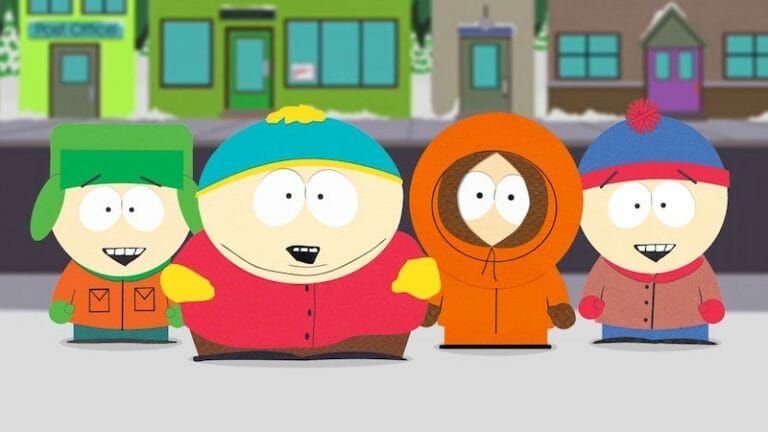By Ken Miyamoto · June 12, 2020

How do South Park creators Matt Stone and Trey Parker plot their stories and episodes?
Welcome to our ongoing Learning from the Masters and Industry Insiders series where we seek out and feature excellent videos, interviews, and discussions of the art, craft, and business of screenwriting and pull the best words of wisdom, writing tips, and screenwriting advice.
Here we turn to MTVU’s video Writing Advice from Matt Stone & Trey Parker @ NYU where the South Park creators discuss how to best plot out episodes and screenplays. We pull the best information from the video and elaborate on their points.
Read More: What Is Plot?
The writing duo explained that their South Park writers room has a dry-erase board as a wall, separated into three sections — Act I, Act II, and Act III. And within those sections, they write out various ideas for scenes.
“I walk around with markers like this and say, ‘Okay, this would be a funny scene if we had this,'” Parker explains. “Each individual scene has to work as a kind of funny sketch. You don’t want one scene that’s just like, ‘Well, what was the point of that scene?'”
And this is their first helpful tip within the video — every scene must count. And each individual scene must be a contained story within those confines. Yes, they have to relate to what came before and what will come after, but they have to have worth as individual scenes as well.
With comedy, those scenes have to play out like a single sketch. With other genres, they can be an exciting action sequence (action thrillers), a scary buildup leading to a scary moment (horror), or a dramatic moment where a character showcases emotion based off of some type of conflict (drama).
“We can take these beats — which are basically the beats of your outline — and if the words ‘and then…’ belong between those beats, you’re f***ed… you’ve got something pretty boring.”
“And then…” denotes that the scenes aren’t linked by conflict, shifting circumstances, or cause and effect. They’re just random scenes put together that have no real connection to what has come before and what will come after.
“What should happen between every beat that you’ve written down is either the word ‘Therefore…’ or ‘But…’
Those two words are what give you the causation between each beat. “And then…” is just linking beats that have no other connection.
This happens…
And therefore this happens…
But, this happens…
Therefore this happens…
The cause and effect of scenes are what make a story — not just a list of scenes happening in order.
Check out the whole video here:
For all the latest from The Script Lab, be sure to follow us on Twitter, Facebook, and Instagram.
And become a member of TSL 360 to enjoy the LARGEST screenwriting education content library, featuring masterclasses, deep-dive interviews, and lectures from Academy Award-winning screenwriters, TV show-runners, producers, literary managers, agents, studio executives, and leading educators – all in one place.